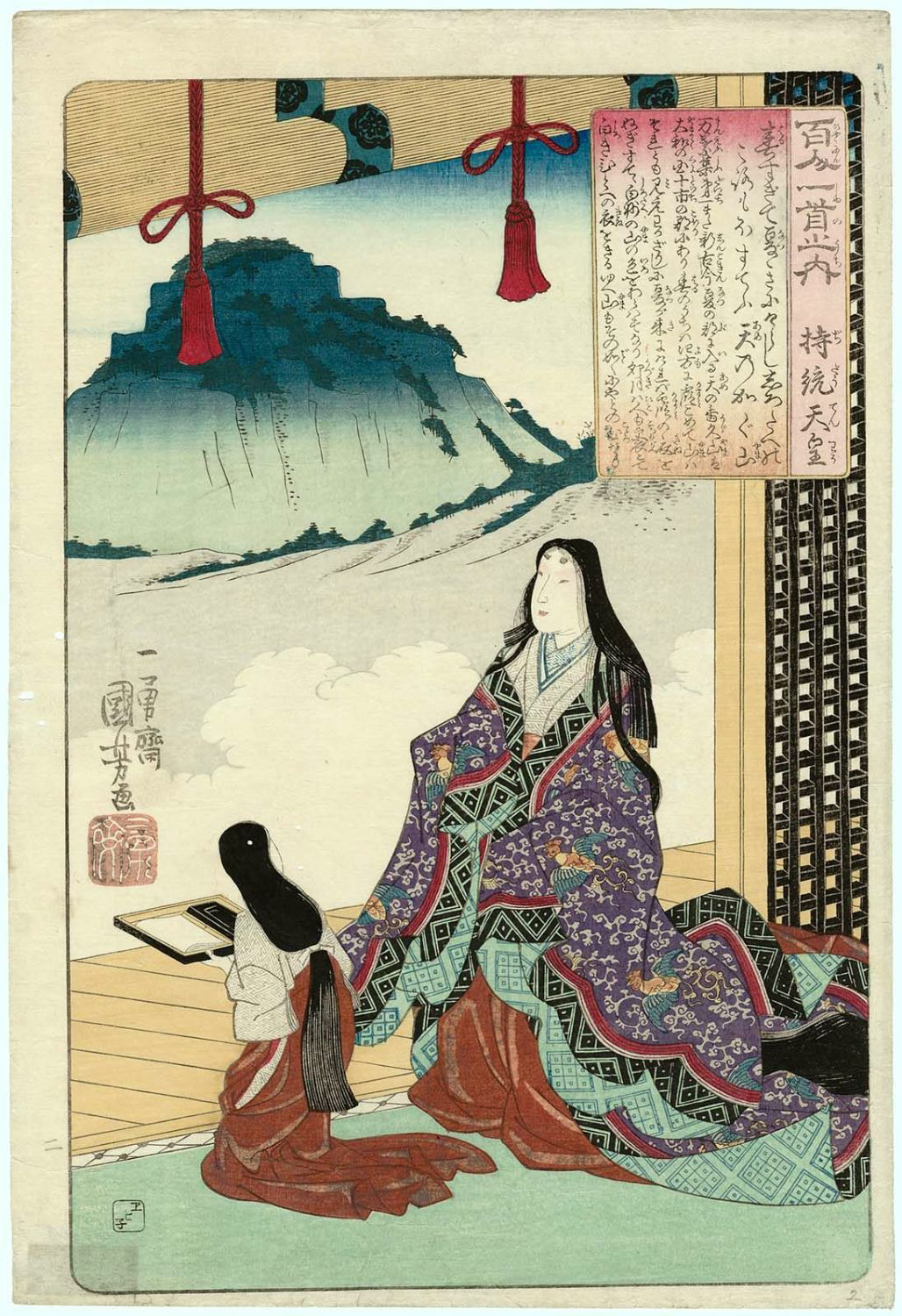|
Tachibana No Michiyo
(655? – February 4, 733), or , was a court lady of early Nara period and mother of Empress Kōmyō. She served in the courts of emperor Emperor Tenmu, Temmu and emperor Emperor Shōmu, Shomu. In 679, around 15 years old, Michiyo became a Myōbu. On November 708, her Tachibana clan (kuge), clan was given the honorary surname "Tachibana Sukune" by Empress Genmei. In 721 she became a Buddhist nun for a brief period to pray for the health of Empress Genmei. Her first husband was an imperial prince, , a descendant of Emperor Bidatsu. They bore three children - Prince Katsuragi (later Tachibana no Moroe), Prince Sai (later Tachibana no Sai) and Princess Moro. Soon after Prince Minu's death, she married Fujiwara no Fuhito, whose principal wife had died. They had a daughter named Kōmyōshi, who was Fuhito's third daughter. Many of Michiyo's descendants also married Fuhito's descendants. It's unknown if Fuhito's fourth daughter, Tahino, the principal wife of Tachibana no Moroe is al ... [...More Info...] [...Related Items...] OR: [Wikipedia] [Google] [Baidu] |
Tachibana Shrine
The , also referred to as the Agata no Inukai no Michiyo, Lady Tachibana Shrine, is a miniature shrine owned by the Hōryū-ji temple complex of Nara Prefecture, Japan. Its precise date of construction is unknown, but it is thought to have been created a little later than its counterpart the Tamamushi Shrine. The sculptures inside are dated to the years around 710 (the end of the Asuka period and start of the Nara period) and have been Cultural Properties of Japan, designated a National Treasure (Japan), National Treasure. History The precise date of the shrine is uncertain, but it is generally placed at the end of the Asuka period (710). A ''terminus ante quem'' is provided by the first documentary evidence for its existence, mention in the temple inventory of 747, the , which includes "two items taking the form of a palace building, one with a design of a Thousand Buddhas in repoussé metalwork, the other with a statue of gilt bronze" (宮殿像貳具 一具金泥押出千佛像 ... [...More Info...] [...Related Items...] OR: [Wikipedia] [Google] [Baidu] |
Empress Jitō
was the 41st emperor of Japan, monarch of Japan,Imperial Household Agency (''Kunaichō'') 持統天皇 (41)/ref> according to the traditional List of Emperors of Japan, order of succession. Jitō's reign spanned the years from Jitō period, 686 through 697.Titsingh, Isaac. (1834). In the history of Japan, Jitō was the third of eight women to take on the role of Josei Tennō, empress regnant. The two female monarchs before Jitō were Empress Suiko, Suiko and Empress Kōgyoku, Kōgyoku/Empress Saimei, Saimei. The five women sovereigns reigning after Jitō were Empress Genmei, Genmei, Empress Genshō, Genshō, Empress Kōken, Kōken/Empress Shōtoku, Shōtoku, Empress Meishō, Meishō, and Empress Go-Sakuramachi, Go-Sakuramachi. Traditional narrative Empress Jitō was the daughter of Emperor Tenji. Her mother was Ochi-no-Iratsume, the daughter of Minister Ō-omi Soga no Yamada-no Ishikawa Maro. She was the wife of Tenji's full brother Emperor Tenmu, whom she succeeded on the ... [...More Info...] [...Related Items...] OR: [Wikipedia] [Google] [Baidu] |
733 Deaths
__NOTOC__ Year 733 ( DCCXXXIII) was a common year starting on Thursday of the Julian calendar. The denomination 733 for this year has been used since the early medieval period, when the Anno Domini calendar era became the prevalent method in Europe for naming years. Events By place Byzantine Empire * Emperor Leo III confiscates the papal territories in Sicily and Calabria (Southern Italy), from which Pope Gregory III derives most of his income tax. He transfers ecclesiastical jurisdiction in the former Praetorian prefecture of Illyricum to Anastasius, patriarch of Constantinople. Gregory begins his support of a revolt in Italy against iconoclasm. By now the break between the papacy and the Byzantine Empire is almost complete. * Arab-Byzantine Wars: Arab forces under Mu’awiya ibn Hisham penetrate deep into Anatolia and conquer the cities of Antalya, Doralyum and Afyonkarahisar. These conquests differ from previous ones, as Arab military settling occurs in them, ma ... [...More Info...] [...Related Items...] OR: [Wikipedia] [Google] [Baidu] |
Buddhist Nuns Of The Asuka Period
Buddhism, also known as Buddhadharma and Dharmavinaya, is an Indian religion and philosophical tradition based on teachings attributed to the Buddha, a wandering teacher who lived in the 6th or 5th century BCE. It is the world's fourth-largest religion, with about 500 million followers, known as Buddhists, who comprise four percent of the global population. It arose in the eastern Gangetic plain as a movement in the 5th century BCE, and gradually spread throughout much of Asia. Buddhism has subsequently played a major role in Asian culture and spirituality, eventually spreading to the West in the 20th century. According to tradition, the Buddha instructed his followers in a path of development which leads to awakening and full liberation from '' dukkha'' (). He regarded this path as a Middle Way between extremes such as asceticism or sensual indulgence. Teaching that ''dukkha'' arises alongside attachment or clinging, the Buddha advised meditation practices and ethica ... [...More Info...] [...Related Items...] OR: [Wikipedia] [Google] [Baidu] |

